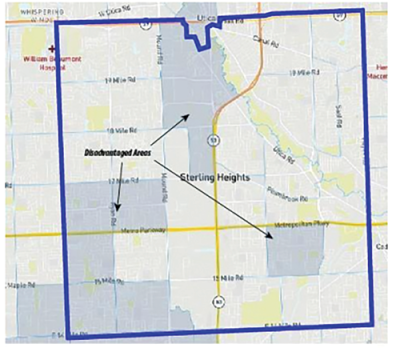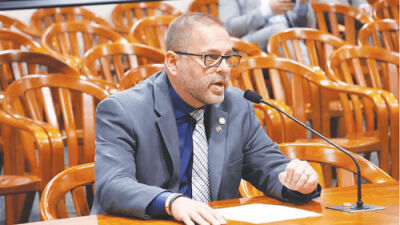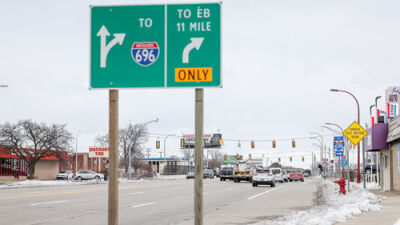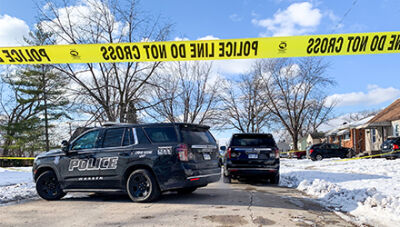
According to city officials, this map shows “disadvantaged” areas in Sterling Heights that the city says are eligible for tree plantings funded under an American Forests grant.
Map provided by the city of Sterling Heights
STERLING HEIGHTS — Sterling Heights has some new “seed money” for planting trees.
Sterling Heights announced that it was one of 33 municipalities in the American Midwest and Northeast to recently get grant money from the national conservation group American Forests and its Tree Equity Catalyst Fund. According to American Forests, that fund’s funding comes in part from the Inflation Reduction Act of 2022.
Sterling Heights says it received $500,000 in grant money from the fund, which according to American Forests, can be used toward “equitable tree planning and planting, nursery development, community engagement, workforce development and more.”
Benita Hussain, chief program officer of Tree Equity at American Forests, said her group proudly supports the communities.
“From tackling extreme heat to reducing air pollution, tree canopy is essential for healthy, thriving communities,” Hussain said.
For years, several Sterling Heights officials have openly lamented the size of the city’s tree canopy, which the city has estimated at around 19% and below the 40% goal it hopes to attain. The deaths of around 12,000 trees have been blamed on the emerald ash borer.
“The city will plant over 1,000 trees in underserved neighborhoods to address disparities in tree cover among residential properties and boost tree density per acre,” American Forests said in a press release.
Other Michigan cities that reportedly got grant money were Ann Arbor, Jackson, Kalamazoo and Pontiac.
According to Assistant City Manager Jeff Bahorski in an email, the city will spend the grant money over the planting windows of spring and fall 2025 while keeping timing and tree survivability in mind. For instance, the city plans to use the funds on tree species that are native to Michigan, he said.
“This approach provides a measure of protection for the new canopy against the effects of a species-specific disease or invasive species infestation,” Bahorski said.
In addition, due to the grant’s specifications, 740 trees will be planted in disadvantaged, “underserved” communities in the city, Bahorski said.
The tree grant comes during a time when the city is asking resident taxpayers for more revenue via a package of initiatives that it calls the Pathway to Play and Preservation. The 15-year, 0.95-mill millage proposal includes, among other things, money toward planting an estimated 15,000 street trees.
A June City Council presentation on the millage proposal revealed that a recent tree survey tallied over 34,800 street and park trees in the city, with 42% of them being from the Acer genus, also known as maple trees.
About 36% of residential properties in Sterling Heights lack a street tree, the presentation added.
The city estimates that it will need more than 200,000 trees in the ground to get to that 40% canopy cover goal, so the endeavor will “require a sustained effort” over the long haul, Bahorski said. He added that the American Forests grant will not be enough to reach that goal.
“The American Forests grant funding is but one of the funding sources that is required to reforest the City’s neighborhoods,” Bahorski said.
“Due to the sheer number of residences without a street tree, the City will need to consider a variety of funding sources in order to reforest Sterling Heights’ neighborhoods.”
Learn more about American Forests by visiting americanforests.org. Find out more about Sterling Heights’ millage proposal by visiting sterlingheights.gov/pathway, or by calling (586) 446-2489.
 Publication select ▼
Publication select ▼


















